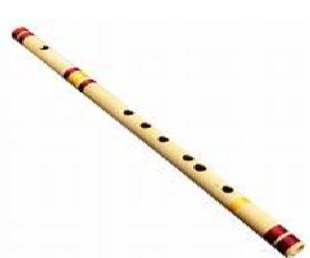Hindustani Classical Flute:
The musical notation of the Hindustani classical system is called "Sargam". The notes in the Hindustani classical system are Sa, Re, Ga, Ma, Pa, Dha, and Ni.
Western Note Equivalent to Sargam System:
- Sa - "Do" or "C"
- Re - "Re" or "D"
- Ga -"Mi" or "E"
- Ma -"Fa" or "F"
- Pa - "Sol" or "G"
- Dha - "La" or "A"
- Ni - "Ti" or "B"
The notes can be either flat or "komal" and "tivra" or (sharp) with slight variations in pitch. Here are the basic notes along with their variations:
Komal Re (Re with a flat sign) - represents a lowered or flatter second note, which means a half-step below Western "D."
Komal Ga (Ga with a flat sign) - represents a lowered or flatter third note, which means a half-step below Western "E."
Tivra Ma (Ma with a sharp sign) - represents a raised or sharper fourth note, which means a half-step above Western "F."
Komal Dha (Dha with a flat sign) - represents a lowered or flatter sixth note, which means a half-step below Western "A."
Komal Ni (Ni with a flat sign) - represents a lowered or flatter seventh note, which means a half-step below Western "B."
A basic scale in Hindustani classical music that is in natural and modified notes is:
Natural notes - Sa, Re, Ga, Ma, Pa, Dha, Ni
With flat signs - Sa, Komal Re, Ga, Ma, Pa, Komal Dha, Ni
The notes are used to help a flutist play in raga also called as melodies in Hindustani classical music. To play Hindustani classical music on the flute, learn the notes and their variations and practice to play the ragas well to perform in front of the audience.

